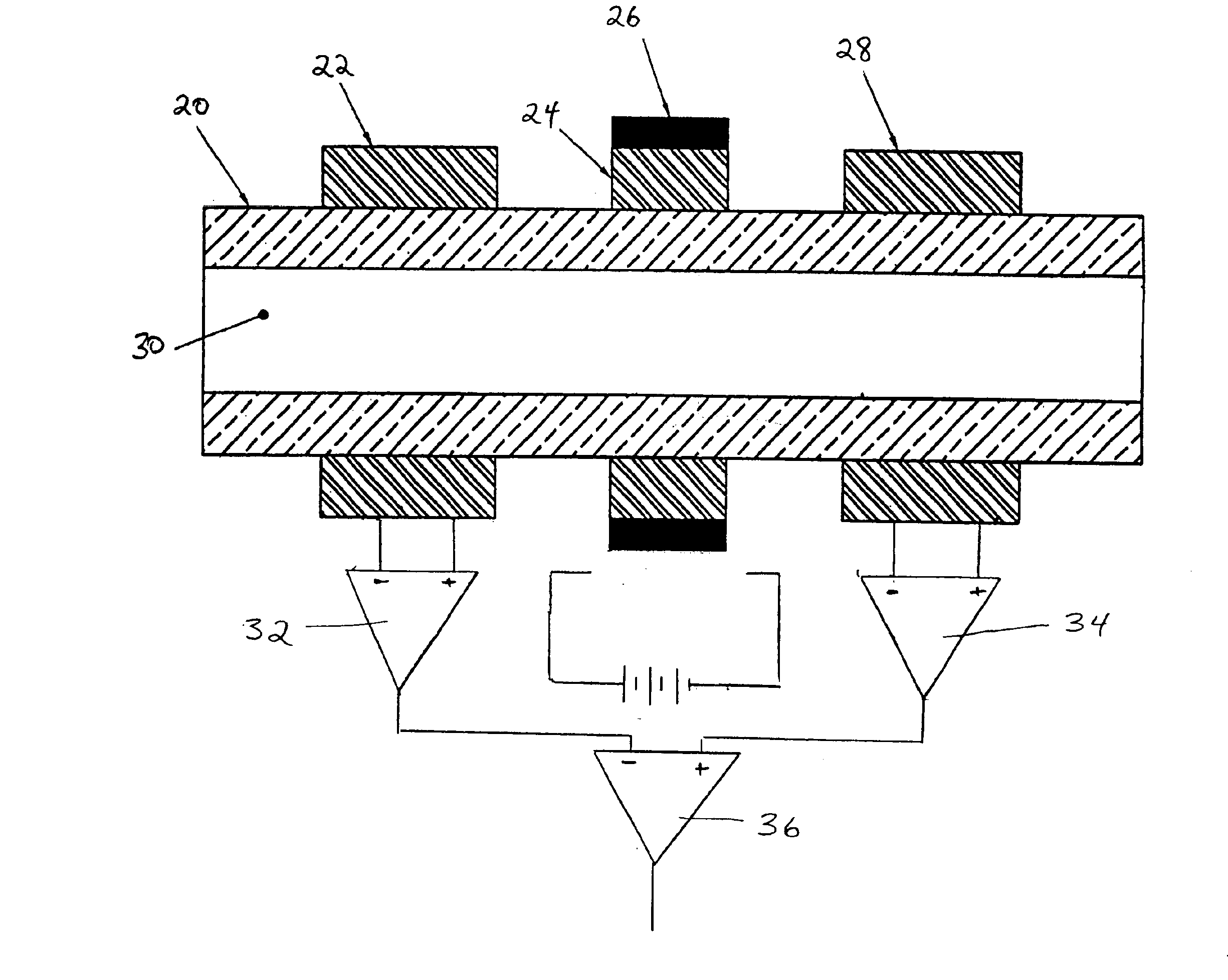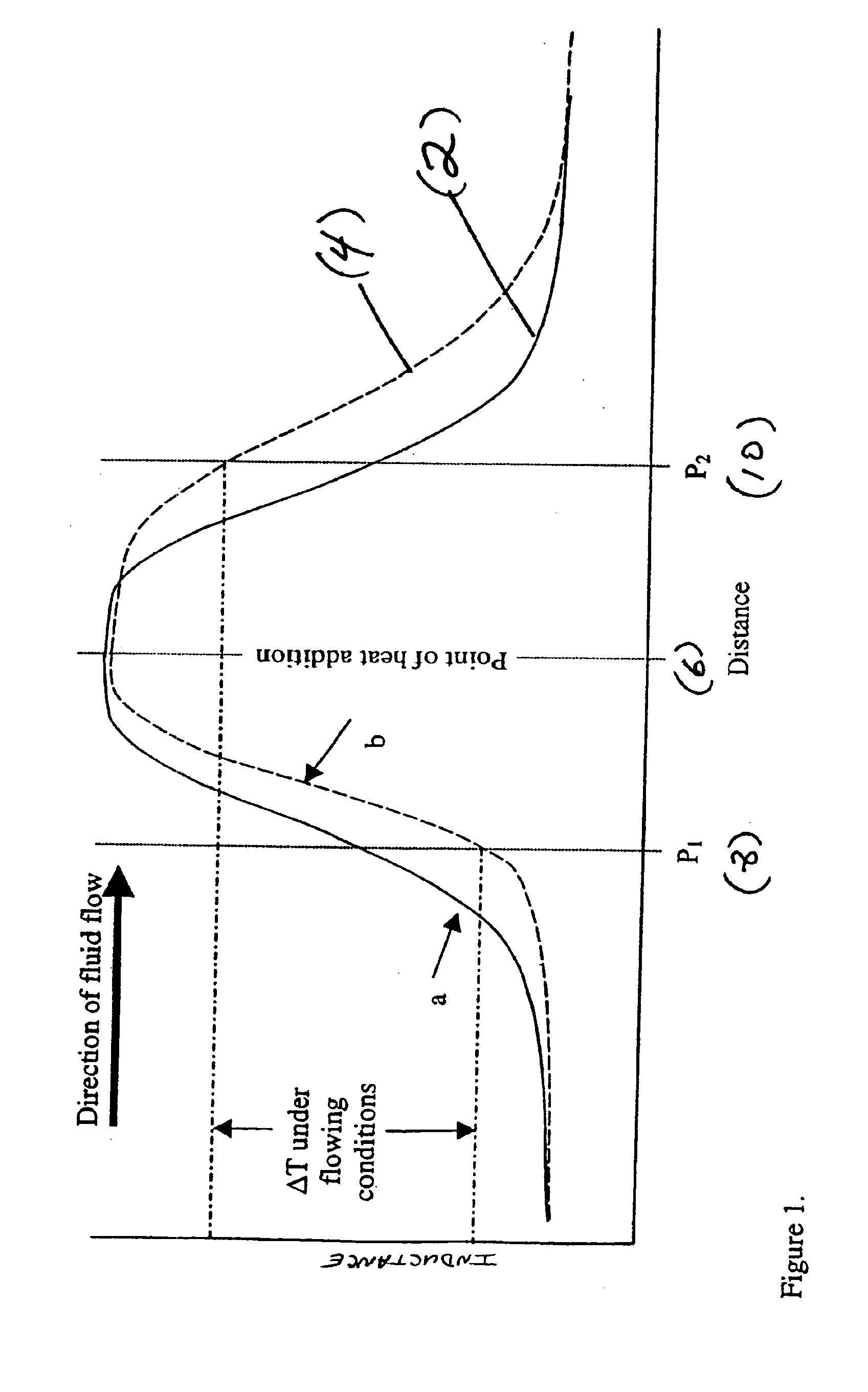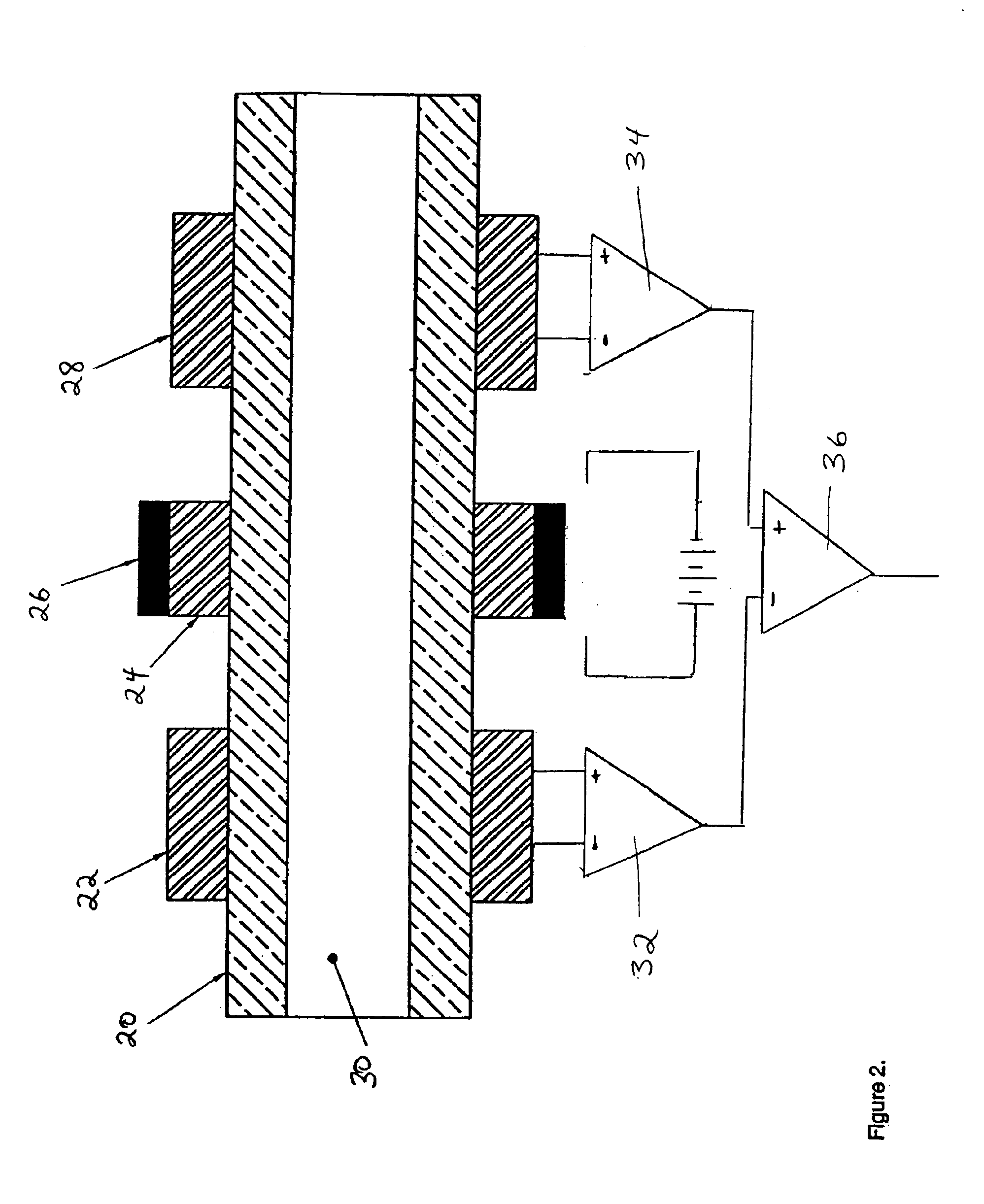System and method of measuring convection induced impedance gradients to determine liquid flow rates
a technology of impedance gradient and convection, applied in the field of liquid flow rate measurement, can solve the problems of inability to account for dynamic variations in fluid flow, inability to achieve continuous flow measurement, etc., to achieve high reproducibility results, reduce the cycle time of gradient, and not increase the dead volume within the flow channel
- Summary
- Abstract
- Description
- Claims
- Application Information
AI Technical Summary
Benefits of technology
Problems solved by technology
Method used
Image
Examples
Embodiment Construction
[0013]FIGS. 1 and 2, wherein like parts are designated by like reference numerals throughout, illustrate an example embodiment of a system and method suitable for measuring the flow of a liquid through a flow channel. This system and method may be used alone or in combination with a High Pressure Liquid Chromatography device. Although the present invention is described with reference to the example embodiments illustrated in the figures, it should be understood that many alternative forms could embody the present invention. One of ordinary skill in the art will additionally appreciate different ways to alter the parameters of the embodiments disclosed, such as the heating means, size, or type of sensor means, in a manner still in keeping with the spirit and scope of the present invention.
[0014]Referring to FIG. 1, a static impedance distribution (2) is shown wherein thermal energy and an alternating current signal is introduced at a fixed excitation point (6), and fluid impedance is...
PUM
| Property | Measurement | Unit |
|---|---|---|
| flow rate | aaaaa | aaaaa |
| liquid flow rates | aaaaa | aaaaa |
| flow rate | aaaaa | aaaaa |
Abstract
Description
Claims
Application Information
 Login to View More
Login to View More - R&D
- Intellectual Property
- Life Sciences
- Materials
- Tech Scout
- Unparalleled Data Quality
- Higher Quality Content
- 60% Fewer Hallucinations
Browse by: Latest US Patents, China's latest patents, Technical Efficacy Thesaurus, Application Domain, Technology Topic, Popular Technical Reports.
© 2025 PatSnap. All rights reserved.Legal|Privacy policy|Modern Slavery Act Transparency Statement|Sitemap|About US| Contact US: help@patsnap.com



